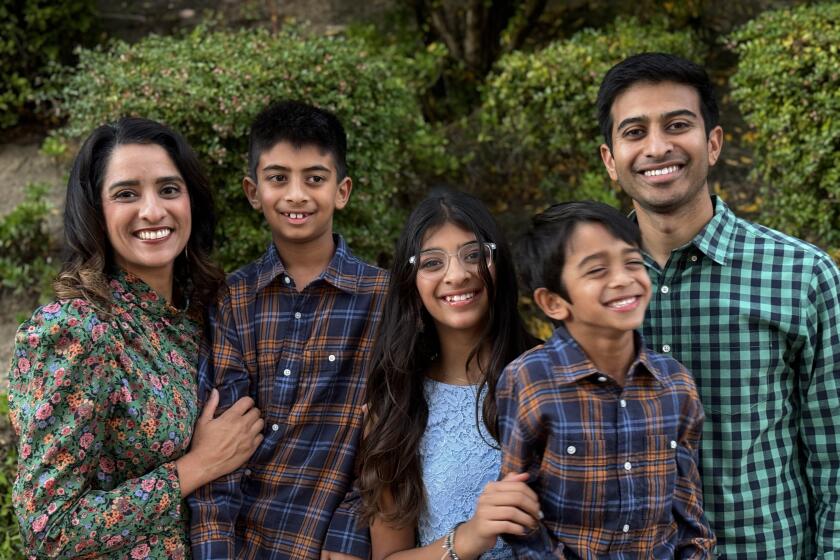Rancho Santa Fe resident continues to ‘climb’ to conquer diabetes
By Karen Billing
Rancho Santa Fe resident Rick Noble marked the 10-year anniversary of Kiss the Sky to Conquer Diabetes with a climb of Mount Tyndall. Noble started KTS for his daughter Kate who “has never known a day of normal” as she was diagnosed with type 1 diabetes as a baby.
Launched in the summer of 2002 with a hike of Mount Whitney that raised over $60,000 to support efforts to cure diabetes, KTS has a mission to keep climbing until there’s a cure.
The group has raised more than $300,000 over the last 10 years.
On Oct. 18, Noble and his team of Nathanael Johnson and Jeff Hanson set out to summit Mount Tyndall, the 10th highest mountain in California in the High Sierras.
While Rick climbed Mount Tyndall, Kate, now a senior at George Washington University, led a group on a hike from Washington Monument to the Lincoln Memorial.
“I would have been excited if only one person showed up to summit the monuments, but I was thrilled when I saw the whole group there supporting Kiss the Sky and me,” said Kate, who was accompanied by her mother Karen. “We had a great time and I am excited to continue work toward finding a cure and to continue doing smaller ‘hikes’ around the country in order to end a disease that has affected me for so long.”
Kate was diagnosed when she was just 1 year old.
“It was a total shock,” said Rick, noting there was no history of the disease on either side of the family.
The family was living in New York at the time and around the holidays Kate had become very sick and was not getting better. They took her to Mount Sinai where they were told she had pneumonia. She was so dehydrated that the Nobles were told she needed to stay in the hospital.
“They came to us and said they had some specialists they wanted us to meet, which is a parent’s nightmare,” Noble said.
It had just so happened that the endocrinologist team at Mt. Sinai had just done training with the emergency room team to alert staff about the signs of diabetes. Kate’s symptoms were recognized—her body was breaking down and the pneumonia was just a symptom of her body trying to battle and losing the fight with diabetes.
The Nobles had to begin an intensive week-long training of how to take care of Kate. Since she was an infant and could not tell them how she was feeling, they had to learn to monitor her blood sugar and administer shots.
That was in 1992 and Noble said they told him then that in 10 years they should be hearing about potential cures. The ability to manage the disease has improved with new technology and they have come a long way to stave off the complications of the disease, such as blindness and amputation, but there is still no cure.
Kate estimates that she has had over 10,000 shots, 60,000 finger pricks and 1,500 insulin pump catheter inserts.
“I don’t remember a day where I did not have diabetes and I would love to know, just for one day or more, what it feels like,” Kate said.
In 2001, Dr. Denise Faustman’s lab at Massachusetts General Hospital had a breakthrough in which they reversed type 1 diabetes with end stage disease in mice, a project the lab aimed to convert to human clinical trials.
The Nobles, who moved to Rancho Santa Fe in 1998, started KTS 10 years ago as a way to support Dr. Faustman’s efforts and to raise awareness for the disease.
With help from American businessman Lee Iacocca (whose wife died of diabetes) and hundreds of grass roots initiatives like KTS, Dr. Faustman’s team raised over $10 million to fully fund phase one of human clinical trials. The phase one trials were a success and they need to raise more than $10 million more to fully fund phase two.
Since that first Mount Whitney climb, Noble and his team have reached the summits of Mount Rainier, Mauna Kea, Humphrey’s Peak, Mount Shasta, Mount Hood and climbed in the Cordillera Real in Bolivia.
Noble said all of the climbs have been great for different reasons. His climbs of Mt. Rainier in Washington have been “incredible” trips. On one trip, he and his team went up one of the most difficult routes called Couch Shoot, a “steep and magnificent couple thousand feet of vertical ice.”
“At the top it was breathtaking,” Noble said. “We slept in the crater which now you’re not allowed to do.”
One of his most memorable experiences was in Bolivia. They were in training at 16,000 feet and about to climb when they heard that the Bolivian government had been overthrown. The team had to get down to 12,000 feet to the city of La Paz where the whole city was cordoned off, people were in gas masks and fires were burning in the streets. They were able to get through blockades to the airport in the wee hours of the morning and board the only plane that left the country to Lima.
“That was pretty wild,” Noble said.
The latest adventure in Mt. Tyndall in October was a very challenging climb that started at 6,000 feet, climbing straight up to a campsite at 10,000 square feet called Anvil Camp.
“Many people call it Advil Camp because it’s so difficult to get to,” Noble said.
From there, the route goes on a melted glacier up a steep shoot to Shepherd Pass at 12,000 feet. The last 2,000 feet are a “vertical, scrambling climb up basically a rock slide of varying size rocks.”
Noble’s climbing partners, Johnson and Hanson, made it to the top but Noble had to stop. He broke his collarbone six months ago and didn’t trust himself on the rocks, telling his partners to summit without him.
“I thought it was a lot better for us to have a successful trip and get the whole team down in one piece. It worked out but it was tough to do,” Noble said. “It’s the only KTS climb that I didn’t make it up.”
While there have been KTS climbs where not everyone has reached the summit, Noble sees all his climbs as a success if they raise awareness for Kate’s disease.
He said while Kate’s disease is considered manageable, the consequences can be disastrous if her blood sugar is too high or too low. Every month Kate has an issue with a body site where she takes her insulin through a pump or the insulin doesn’t work in the way it was anticipated.
“It reminds us very quickly about the constant battle that she has,” Noble said. “Diabetes is a disease that doesn’t go away, even under the best circumstances. There is an attack on her body every day. It’s tough to think about.”
As it is now, KTS still has a little over halfway to go to fund phase two of Faustman’s clinical trials toward a cure.
“I’m extremely hopeful and confident that those dollars will be raised and clinical trials will proceed,” Noble said. “I haven’t scheduled the next climb yet but 10 years ago I said we’d keep climbing until we get a cure. So I’ll be climbing.”
For more information, visit
.




